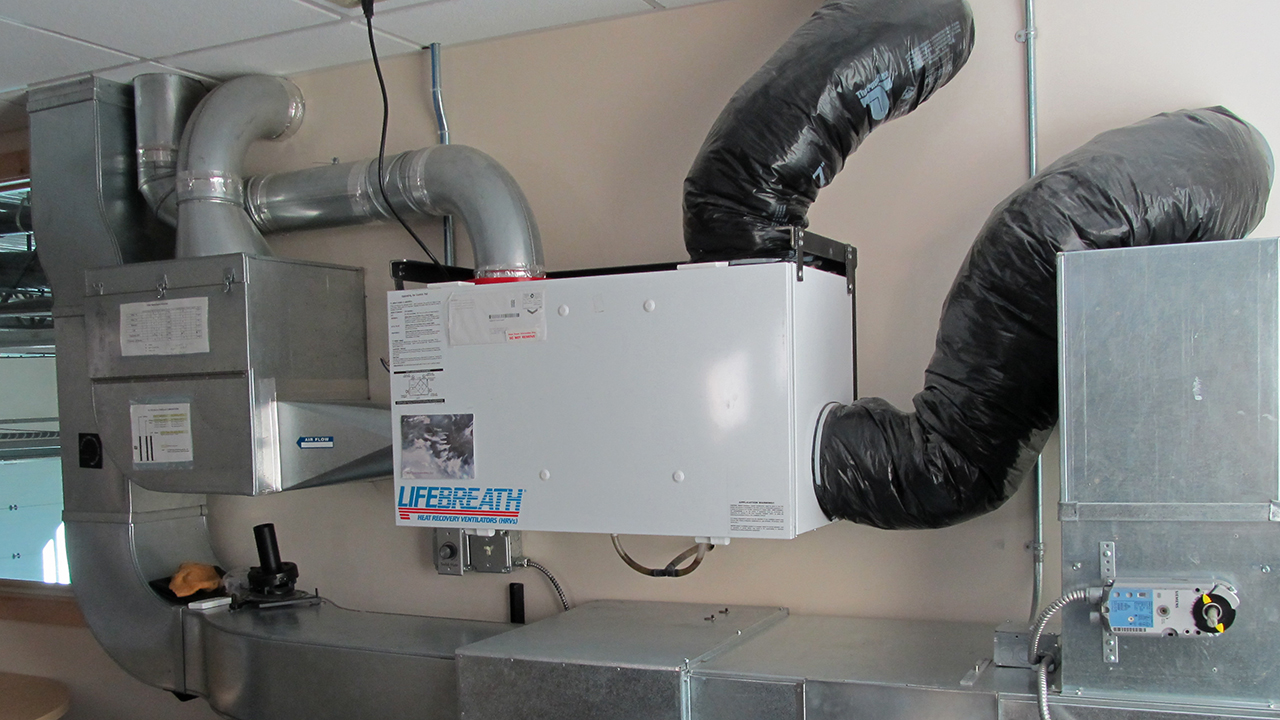The Function of HRV in Sustainable Living
Wiki Article
Discovering the Benefits of Heat Recovery Ventilation for Energy Effectiveness in Houses
Heat Recovery Ventilation (HRV) systems supply home owners a practical strategy to boosting power effectiveness. By reclaiming warmth from outward bound air, these systems can substantially reduce cooling and heating expenses. Additionally, they supply a steady supply of fresh air, boosting interior air high quality and convenience levels. As house owners consider lasting options, understanding the subtleties of HRV systems comes to be significantly important. What elements should one review before making such an investment?Understanding Heat Recovery Ventilation Equipments

Just How HRV Enhances Indoor Air Quality

Power Financial Savings: The Financial Advantages of HRV
Maximizing energy effectiveness, heat recovery ventilation (HRV) systems offer substantial economic benefits for house owners. By recuperating and recycling warm from exhaust air, HRVs substantially lower home heating HRV Heat Recovery Ventilation and cooling prices. This innovation can cause power financial savings of approximately 30%, relying on environment and usage patterns. Home owners commonly observe reduced utility bills soon after setup, making HRVs a financially wise financial investment in time. Additionally, several regions supply rewards or rebates for energy-efficient upgrades, even more boosting the monetary allure. As power prices continue to increase, the cost-effectiveness of HRVs ends up being increasingly clear. On the whole, the consolidation of HRV systems not only advertises power performance however also contributes to long-term monetary savings for homes.The Environmental Effect of Heat Recovery Ventilation
A substantial ecological benefit of heat recovery ventilation (HRV) systems exists in their capability to lower overall power usage. By redeeming warm from exhaust air and transferring it to inbound fresh air, HRV systems minimize the demand for energy-intensive home heating and cooling down techniques. This decrease in energy need adds to decrease greenhouse gas emissions, as much less fossil gas is called for to preserve comfy interior temperature levels. Furthermore, HRV systems improve indoor air quality by effectively trading stale air with fresh exterior air, lowering dependence on mechanical air conditioning systems that can hurt the setting. In general, the execution of HRV systems supports sustainable living techniques and straightens with worldwide initiatives to battle environment modification by advertising power effectiveness in domestic setups.
Selecting the Right HRV System for Your Home
Just how can house owners guarantee they select the right heat recovery ventilation (HRV) system for their demands? They should assess their home's dimension and layout, as these elements influence air flow needs. Next off, evaluating the system's efficiency ratings is important, as greater ratings indicate better performance and power cost savings. Home owners ought to likewise take into consideration installment and maintenance prices, comparing different brand names and designs for value. Furthermore, it is essential to assess sound levels, as some systems run more quietly than others. Consulting with heating and cooling professionals can provide tailored suggestions based upon specific home problems. Taking a look at user evaluations and service warranties can aid in making an educated choice, guaranteeing that the chosen HRV system efficiently boosts interior air quality and energy efficiency.Often Asked Concerns

How Typically Should I Clean or Maintain My HRV System?
The frequency of cleansing or preserving a heat recovery air flow (HRV) system generally depends on use and environmental variables. Normally, it is a good idea to carry out maintenance every 6 months to ensure peak efficiency and air quality.
Can HRV Equipments Aid Reduce Moisture Levels Inside Your Home?
HRV systems can properly minimize indoor humidity levels by exchanging stale, moist air with fresh, drier air from outdoors. HRV Heat Recovery Ventilation. This process aids preserve a well balanced indoor environment, enhancing convenience and protecting against moisture-related concerns
What Is the Life expectancy of a Normal HRV System?
The lifespan of a normal heat recovery ventilation (HRV) system differs, usually lasting between 10 to 15 years. Normal maintenance can expand its efficiency and functional life, making certain peak performance throughout its usage period.Exist Any Type Of Noise Interest In HRV Equipments?
Sound issues with HRV systems can emerge, especially from follower operation. Several modern devices are created to minimize sound degrees, guaranteeing they operate silently while maintaining effectiveness, which resolves potential disturbances in living environments.Can I Mount an HRV System Myself, or Do I Required a Professional?
The specific contemplated whether to set up the heat recovery ventilation (HRV) system directly or hire an expert. Typically, while do it yourself installation is possible, know-how assurances appropriate functionality and compliance with local building ordinance, enhancing system effectiveness.Report this wiki page